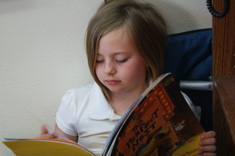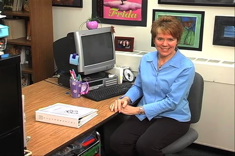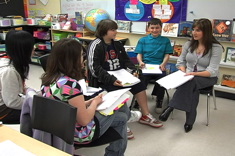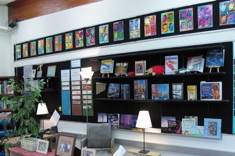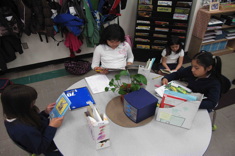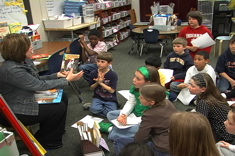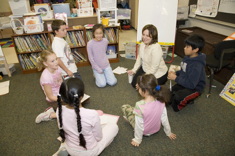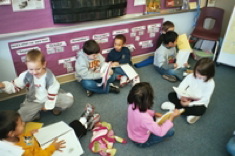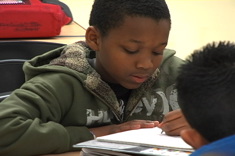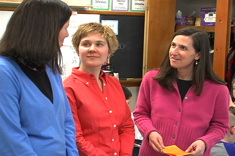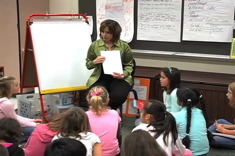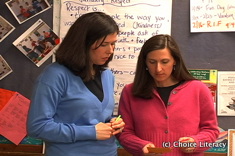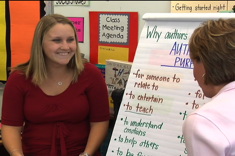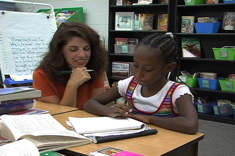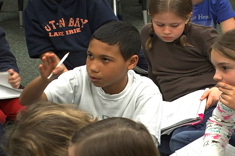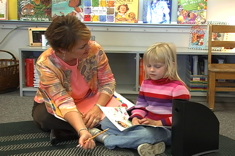Library
Choice Literacy Articles & Videos
The Choice Literacy library contains over 3,000 articles and 900 videos from 150+ contributors. Classic Classroom and Literacy Leadership subscribers have access to the entire library. Content is updated continuously, with five to six new features published each week.
Latest Content
Professional Development Needs Assessment Inventory
Teachers help define a literacy coach's role through a needs assessment survey.
Time for Reading
Shari Frost describes how literacy coaches shadowed children to get a sense of how much reading students were doing.
Planning for a Year of Author Studies (TEMPLATE)
Meaningful reading, writing, speaking, and listening comes out of thoughtfully planned author studies. Gayle Gentry shares her thinking and planning.
Conferring in the Zone: Vygotsky’s Zone of Proximal Development and Writing Conferences
The zone of proximal development continues to be an important frame for noting where writers are at and what's next. Ruth Shagoury lists questions at different phases of writing to help nudge writers forward.
The Literacy Coach Work Area: Arranging Materials in Cramped Spaces
In this four-minute video, Literacy Coach Gail Boushey talks about how she arranges her materials in a limited space, and the benefits of sharing work space with colleagues.
Moving Beyond the Basics: Teaching Inferring to a Fluent Young Reader
In this conference, Gail Boushey (of “The Sisters”) confers with Brandon and helps him understand the concept of inferring.
Flexible Grouping: When, How, and Why
Max Brand explains how daily student grouping can be both planned and spontaneous.
Room for Beliefs: Linking Classroom Design and What We Value
Debbie Miller questions what our classrooms say about our beliefs and practices, and suggests how to bring our designs into closer alignment with our values.
Just Because They Can Doesn’t Mean They Should: Choosing Age-Appropriate Books for Literature Circles
Kids might be missing out on great books that are a better fit if they are reading books just because they can. Shari Frost delivers a smart reminder about challenging advanced readers.
Hooked on Series: Great Series Books for Transitional Readers
Finding the right series for a transitional reader is a gift. Franki Sibberson shares her favorite finds.
Organizing Writing Groups
Franki Sibberson describes how she organizing writing groups in her grades 3 and 4 classroom, and shares a video of a writing group considering leads.
Learning to Cross-Check: Conferring with Hailey
Joan Moser confers with five-year-old Hailey and helps her set a reading goal.
Mix It Up: Helping Young Writers Learn to Confer with Peers and Teachers
Ruth Shagoury models her own writing as a way to introduce the concept of conferring to young learners.
Letters from Home: Letting Families and Friends Teach Us
Brenda Power and Ruth Shagoury use letters from home to learn about students and build community.
Honor Books: Helping Children and Families Build Bridges Between Home and School
What does Andie Cunningham gets when she mixes pictures from the classroom, messages from families and poetry from teachers? A wonderful recipe for an Honor Book you’ll want to try with your own students.
Collaborative Teaching: Finding Common Ground First
These are important questions for teachers entering into a co-teaching situation to consider in advance.
Small Group Instruction: Inferring Focus
In this example of reading instruction with a small group, Gail Boushey of “The Sisters” leads a discussion of inference, using Peter Rabbit as a focus text. All of the children in the group are reading at different levels independently, but they share a goal of learning more about inferring.
Assessing Student Writing
Don't let the pressure of standards and testing take away from the joys of writing workshop. Franki Sibberson explains how assessment helps her infuse energy and excitement into her writing program.
Three Little Phrases No Literacy Coach Can Live Without
Brenda Power shares trade secret phrases for communicating with colleagues.
Viewing Guides for DVDs
Here’s where you can find workshop guides for all Choice Literacy DVDs.
Night Terrors: Let the Coaching Begin!
Jennifer Allen realizes how much we miss if we wait till the start of the school year to begin mentoring colleagues. When she helps new teacher Jess deal with nightmares about the first day of school, she discovers some big themes they will be mulling together all year long.
Anchor Books for Modeling Writer’s Craft in Workshops
Franki Sibberson shares her favorite books for modeling writer’s craft in her classroom.
Opinion Exchange: A Workshop Activity for Study Groups
New teachers need so much their first year and having the ability to be heard and have their opinions valued is right up there. Ruth Shagoury offers a respectful exchange to meet that need.
Using Foam Boards in Writer’s Workshop
Franki Sibberson explains how she extends the wall space in her classroom for instruction through the use of foam boards.
Writing Conference Principles
Brenda Power and Ruth Shagoury describe the principles they live by when conferring with students.
Planning a New Teachers’ Professional Development Program
Jennifer Allen maximizes resources as she plans for a monthly professional development group for new teachers.
Playing with Word Work: Inviting Students to See Playful Language in Books (BOOKLIST)
Franki Sibberson brings fun into word work through the use of picture books with her 5th graders.
The Curricular Support Menu: A Collaborative Tool for Assisting Colleagues
This support menu is a fun way for literacy coaches to survey teachers for support requests.
Planning for K-3 Author Studies (eGUIDE)
Gayle Brand knows the power of author studies and shares her activities, unit plans and year-long glances to support students identification as readers and writers.
Noticing Words to Expand Vocabulary: Conferring with Mariah
In this conference with six-year-old Mariah, Joan Moser of “The Sisters” has chosen to focus on expanding vocabulary.
Browse Content By
Type
Category
- Assessment Tools
- Big Fresh Archives
- Booklists
- Choice Numeracy
- Classroom Design
- Common Core
- Community Building
- Conferring
- Content Literacy
- Digital Literacy
- English Language Learners
- Equity
- Family Relations
- Free Samples
- Guiding Groups
- Leadership
- Literacy Coaches
- Mentor Texts
- Minilessons
- New Teacher Mentors
- Podcasts
- Poetry
- Quote Collections
- Reading Strategies
- Self Care
- Struggling and Striving Learners
- Talking and Listening
- Teacher Study Groups
- Teaching Reading
- Teaching Writing
- Word Study and Vocabulary
Author
- Melissa Quimby
- Nawal Qarooni
- Gwen Blumberg
- Julie Cox
- The Lead Learners
- Hannah Tills
- Josie Stewart
- Ruth Metcalfe
- Mallory Messenger
- Becca Burk
- Jodie Bailey
- Vivian Chen
- Mary Brower
- Tiffany Abbott Fuller
- Stephanie Affinito
- Ruth Ayres
- Leigh Anne Eck
- Heather Fisher
- Shari Frost
- Julie Johnson
- Suzy Kaback
- Gigi McAllister
- Shirl McPhillips
- Melanie Meehan
- Cathy Mere
- Debbie Miller
- Tara Barnett and Kate Mills
- Tammy Mulligan
- Dana Murphy
- Bitsy Parks
- David Pittman
- Brenda Power
- Heather Rader
- Matt Renwick
- Mandy Robek
- Christy Rush-Levine
- Gretchen Schroeder
- Jen Schwanke
- Brian Sepe
- Katherine Sokolowski
- Stella Villalba
- Jennifer Vincent
Grade Level
Choice Literacy Membership
Articles
Get full access to all Choice Literacy article content
Videos
Get full access to all Choice Literacy video content
Courses
Access Choice Literacy course curriculum and training


